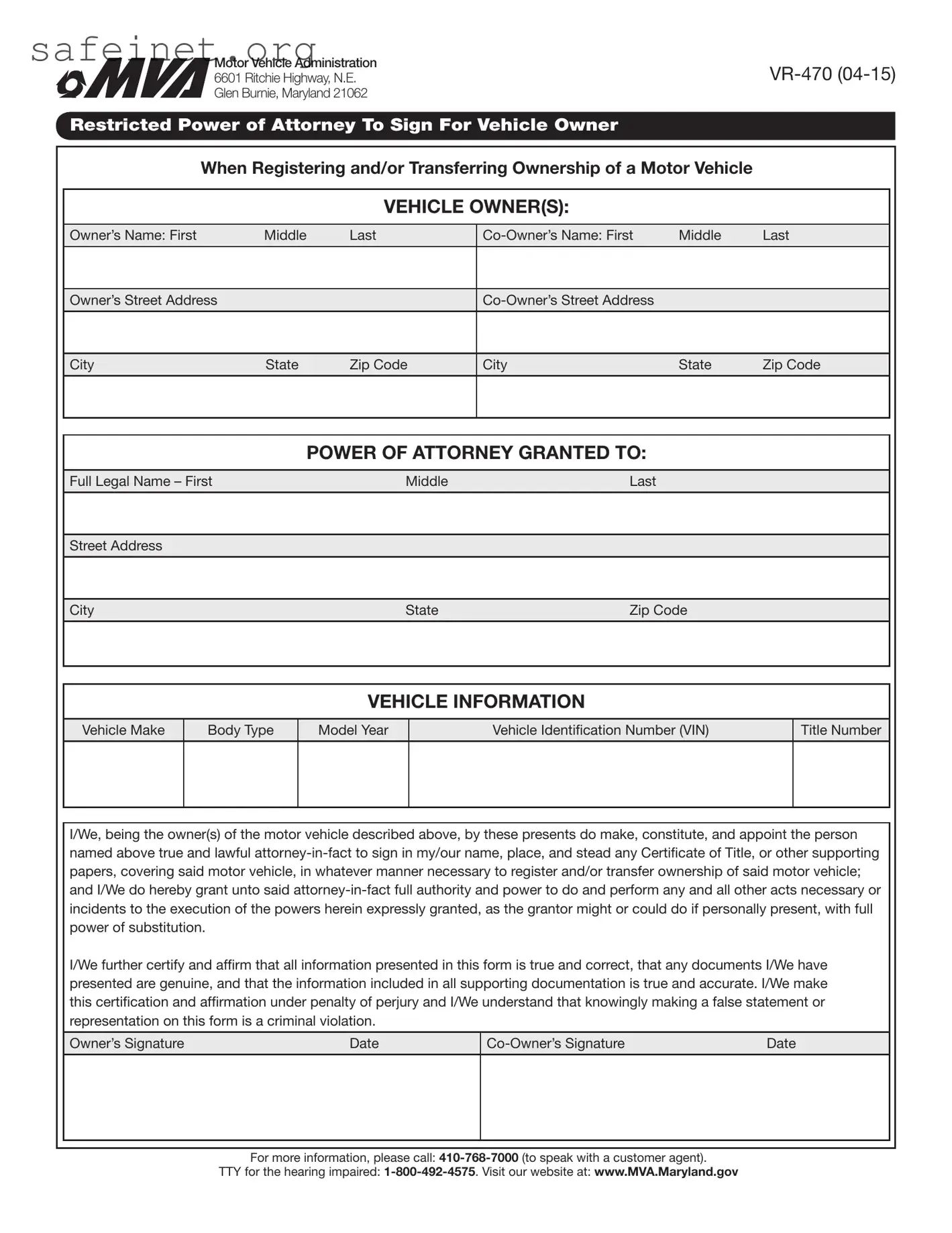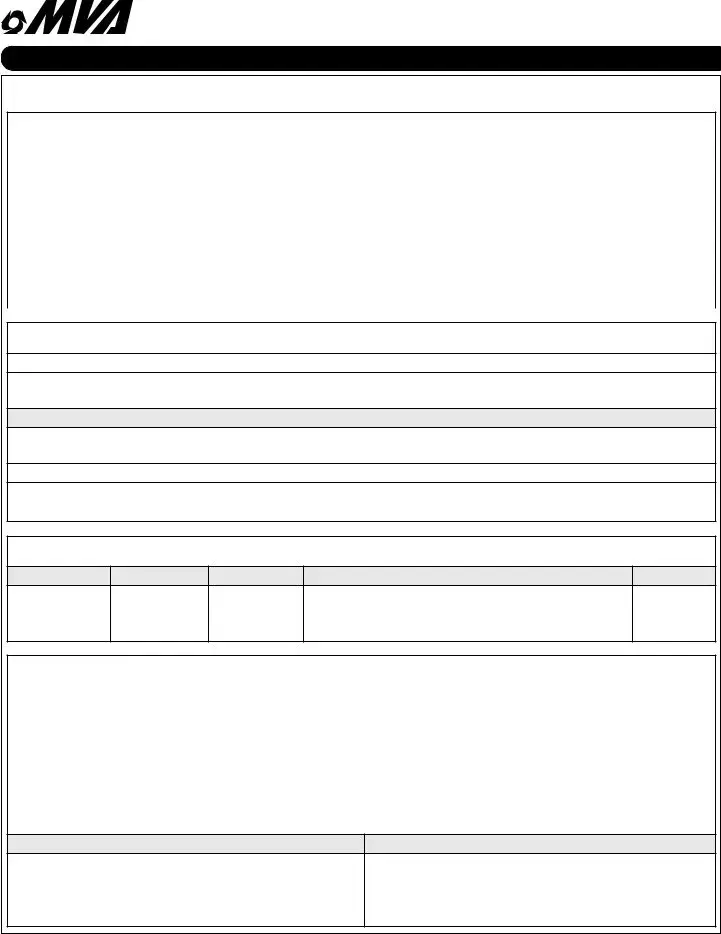What is the Vehicle POA VR-470 form?
The Vehicle POA VR-470 form is a Power of Attorney document that allows an individual to designate another person to act on their behalf regarding vehicle-related matters. This may include activities such as transferring ownership, registering a vehicle, or obtaining a duplicate title. Essentially, it grants the appointed agent the authority to perform specific tasks related to the vehicle in place of the owner.
Why would I need to use the Vehicle POA VR-470 form?
You might need to use the form if you are unable to attend to vehicle-related tasks yourself. This could occur due to various reasons, such as being out of town, having health issues, or needing assistance from someone more familiar with the process. The form ensures that your chosen representative can legally handle these affairs without complications.
How do I fill out the Vehicle POA VR-470 form?
To fill out the form, provide your name and contact information along with the details of the person you are appointing as your agent. Include specifics about the vehicle, such as the make, model, and VIN (Vehicle Identification Number). Ensure that both you and your agent sign the form to make it valid. Always double-check for accuracy to prevent delays in processing.
Where do I submit the Vehicle POA VR-470 form?
The completed Vehicle POA VR-470 form can typically be submitted to your local Department of Motor Vehicles (DMV) office. Some states may also allow electronic submission or processing through certain online platforms. Be sure to check the specific requirements for your state to ensure compliance.
Is there a fee associated with using the Vehicle POA VR-470 form?
While the form itself may not have a direct fee, there may be associated costs depending on the actions your agent is taking on your behalf. These can include fees for title transfers, registrations, or other administrative services at the DMV. Always inquire about potential costs prior to submitting the form to avoid surprises.
Can the Power of Attorney granted through the VR-470 form be revoked?
Yes, you can revoke the Power of Attorney at any time. To do so, it's advisable to create a formal notice of revocation and provide it to your agent. Additionally, notifying the DMV and any other relevant parties is essential to ensure they are aware that the authority granted is no longer valid. It's wise to keep copies of all documentation for your records.

